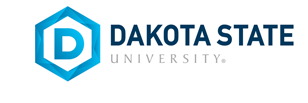Date of Award
Fall 11-2024
Document Type
Dissertation
Degree Name
Doctor of Philosophy in Computer Science (PHDCS)
First Advisor
Austin O'Brien
Second Advisor
Stephen Krebsbach
Third Advisor
Cherie Noteboom
Fourth Advisor
Mark Spanier
Abstract
This research leveraged generative artificial intelligence to significantly enhance the training dataset of bone surface modification examples, optimizing computer vision classification for archaeological artifacts. The current method of manually producing bone surface modification examples is both time-consuming and labor-intensive, imposing constraints on the number of images available for training computer vision models, which require substantial data to achieve high accuracy. To address this limitation, a generative diffusion model fine-tuned using Low-Rank Adaptation (LoRA) was trained on an existing dataset of bone surface modification examples. The fine-tuned model was then used to generate synthetic images, which were subsequently applied in a computer vision system to identify and classify archaeological artifacts. Specifically, the system determined whether bone surface modifications were made on bones containing meat or those without. Multiple computer vision models were trained and evaluated using both the original dataset and the augmented dataset containing synthetic images. Metrics such as accuracy, loss and F1 scores were assessed, and various combinations of activation functions and optimizers were tested to identify configurations that performed optimally with the synthetic dataset compared to the baseline. The findings demonstrate that synthetic datasets generated through this approach can substantially improve accuracy and F1 scores, particularly in models that perform poorly with smaller, original datasets. Furthermore, the combination of the original dataset with synthetic data amplifies these improvements, solidifying this method as a powerful solution for addressing data scarcity and enhancing the performance of computer vision models in archaeological research.
Recommended Citation
Mixon, Jason, "Bone Surface Modification Dataset Synthesis for Computer Vision Models Using LoRA Tuned Latent Diffusion Models" (2024). Masters Theses & Doctoral Dissertations. 469.
https://scholar.dsu.edu/theses/469

